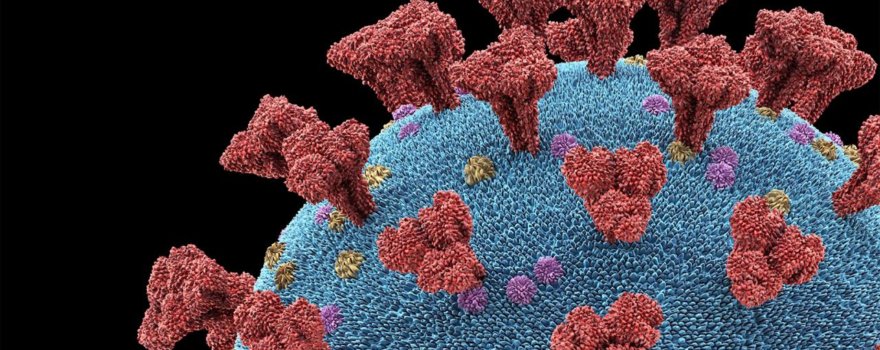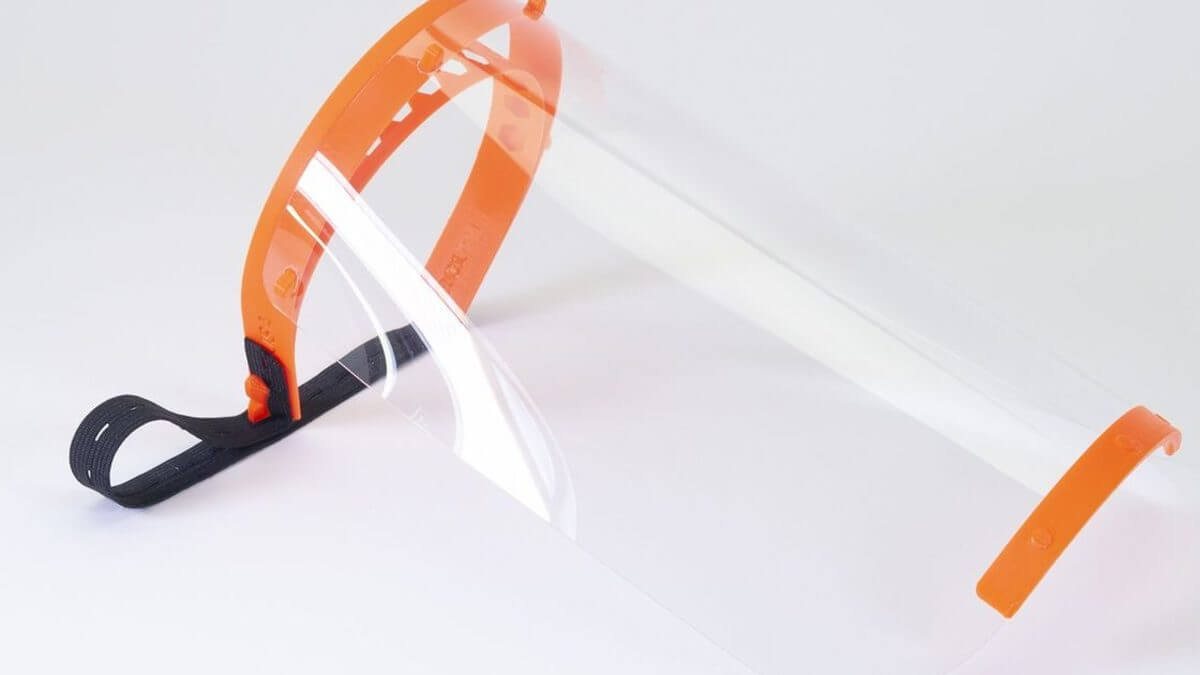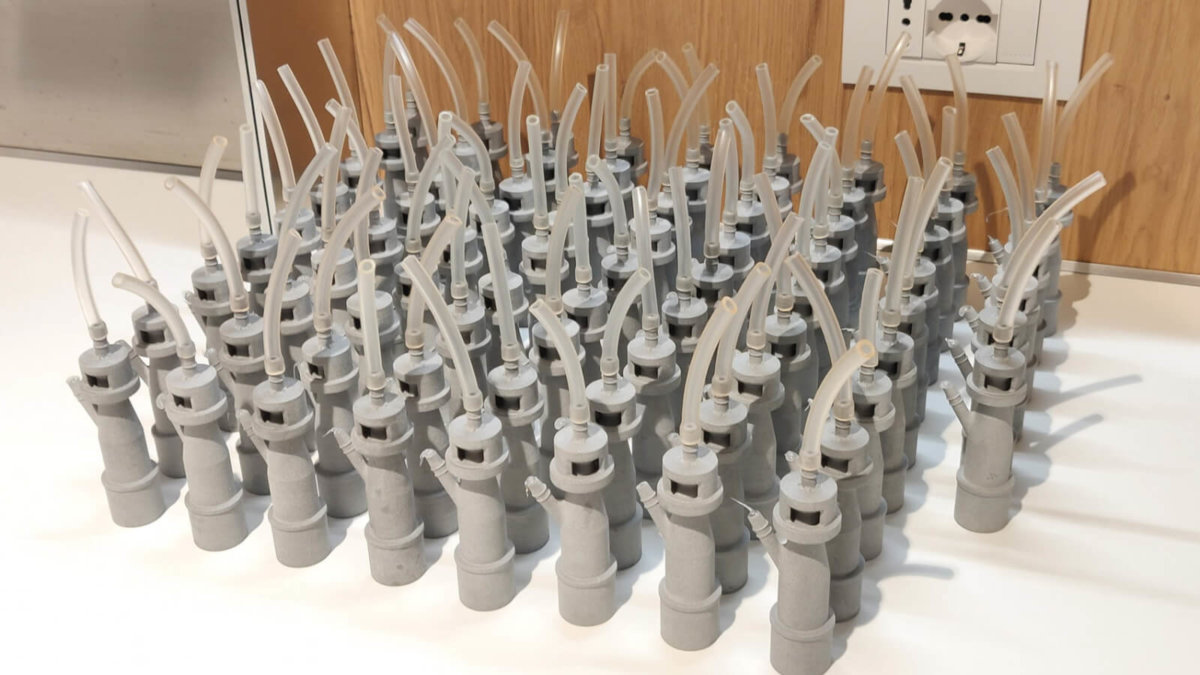中文
ENGLISH
中文
ENGLISH

With supply chains interrupted and demand for products decreasing, the coronavirus pandemic is hitting the manufacturing industry hard. And because several countries are still months away from controlling their local COVID-19 situation, it could be a while before business gets back to normal.
But that doesn’t mean the rapid manufacturing world will sit idly by during these strange times. In fact, many on-demand manufacturing services are already being used in the fight against the virus, providing inventive solutions to common problems.
From 3D printed face shields to CNC machined sneeze guards, here are some of the ways rapid manufacturing is helping to fight COVID-19.

3D printing is one of the fastest and most accessible forms of manufacturing, and businesses and individuals around the world are looking for ways to use 3D printers to help combat the novel coronavirus.
Although there are some doubts over 3D printing’s capacity to fabricate critical medical components, one reasonably safe application of additive manufacturing is the printing of plastic face shields for medical professionals.
With doctors and nurses currently struggling to obtain the protective gear they desperately need during the pandemic, the global “maker” community has started 3D printing protective face shields which protect the wearer’s face from coughs and sneezes. The shields can even be used by service workers such as grocery store cashiers.
3D printer manufacturer Prusa 3D has developed one version of an open-source face shield, which can be downloaded and printed by anyone. The single-use mask consists of a 3D printable headband and chin band, which can be attached to a piece of clear, laser-cut plexiglass that functions as the shield.
“Reach out to institutions in your local area and ask them if they could use some additional protective wear,” Prusa says. “You could offer your help to all those who now have to stay in the service or be in contact with many other people in the time of crisis.”
Major 3D printing companies have joined the cause to produce face shields during the COVID-19 pandemic. To date, market leader Stratasys has received requests for more than 350,000 units.
If you live in an area affected by the coronavirus, you may have noticed stores installing temporary sneeze guards at checkouts. These transparent guards function as a barrier between the customer and the cashier, reducing the chances of one infecting the other through coughing or sneezing.
Unfortunately, many shops do not have access to well-made sneeze guards. Some are simply hanging cling wrap or other clear materials they have lying around.
CNC machining can be used to fabricate better sneeze guards for store checkouts. Using a clear material like PMMA, a machinist can cut a large screen with threads for screws. The guard can then be affixed to a checkout area, desk or kiosk window to provide a safe barrier between customer and cashier.
Guards can also be used for other purposes, such as covering fresh food or other products that will be served to a customer.
Because sneeze guards are very simple designs, machine shops have the capacity to fabricate multiple units in a short period of time.

A lack of potentially life-saving ventilation equipment has hampered the fight against COVID-19, but additive manufacturing offers a potential solution to supply chain problems.
In particular, professional 3D printers and medically safe materials could be used to print small items like valves and adapters, which connect a ventilator machine to a patient’s face mask, allowing them to breathe freely.
Although 3D printer users have been keen to use their expertise to print ventilator components, there is some hesitation over the safety of doing so. In general, the printing of critical medical components should be handled by experienced professionals.
Many 3D printed ventilator components, designed recently to address the global pandemic, are currently awaiting approval from regulators.
A recent study from the US National Institutes of Health found that the novel coronavirus can last for two to three days on a stainless steel surface, which makes objects like door handles a potential danger.
Since it is not always possible to disinfect a door handle immediately after using it — or, indeed, to wash your hands — some businesses and building managers are turning to solutions such as foot-operated door openers.
Foot-operated door openers allow people to pull open a door using the sole of their shoe, nullifying the threat of manual virus transmission.
The devices are small metal protrusions that can be screwed to the lower section of a door. A spiked or grippy surface on the upper plane allows the user to grip the device with their shoe, then pull the door towards them using only their foot.
These door openers can be fabricated in different ways. CNC machines are one option since they can cut the kind of durable metal required, but sheet metal fabrication equipment may be the best solution.
Most foot-operated door openers consist of a single piece of metal bent into an L shape or asymmetrical U shape, with one face screwed to the door and the other(s) functioning as the “handle.” A brake, a kind of sheet metal forming machine, can be used to make the appropriate bends in the sheet metal.

With supply chains interrupted and demand for products decreasing, the coronavirus pandemic is hitting the manufacturing industry hard. And because several countries are still months away from controlling their local COVID-19 situation, it could be a while before business gets back to normal.
But that doesn’t mean the rapid manufacturing world will sit idly by during these strange times. In fact, many on-demand manufacturing services are already being used in the fight against the virus, providing inventive solutions to common problems.
From 3D printed face shields to CNC machined sneeze guards, here are some of the ways rapid manufacturing is helping to fight COVID-19.

3D printing is one of the fastest and most accessible forms of manufacturing, and businesses and individuals around the world are looking for ways to use 3D printers to help combat the novel coronavirus.
Although there are some doubts over 3D printing’s capacity to fabricate critical medical components, one reasonably safe application of additive manufacturing is the printing of plastic face shields for medical professionals.
With doctors and nurses currently struggling to obtain the protective gear they desperately need during the pandemic, the global “maker” community has started 3D printing protective face shields which protect the wearer’s face from coughs and sneezes. The shields can even be used by service workers such as grocery store cashiers.
3D printer manufacturer Prusa 3D has developed one version of an open-source face shield, which can be downloaded and printed by anyone. The single-use mask consists of a 3D printable headband and chin band, which can be attached to a piece of clear, laser-cut plexiglass that functions as the shield.
“Reach out to institutions in your local area and ask them if they could use some additional protective wear,” Prusa says. “You could offer your help to all those who now have to stay in the service or be in contact with many other people in the time of crisis.”
Major 3D printing companies have joined the cause to produce face shields during the COVID-19 pandemic. To date, market leader Stratasys has received requests for more than 350,000 units.
If you live in an area affected by the coronavirus, you may have noticed stores installing temporary sneeze guards at checkouts. These transparent guards function as a barrier between the customer and the cashier, reducing the chances of one infecting the other through coughing or sneezing.
Unfortunately, many shops do not have access to well-made sneeze guards. Some are simply hanging cling wrap or other clear materials they have lying around.
CNC machining can be used to fabricate better sneeze guards for store checkouts. Using a clear material like PMMA, a machinist can cut a large screen with threads for screws. The guard can then be affixed to a checkout area, desk or kiosk window to provide a safe barrier between customer and cashier.
Guards can also be used for other purposes, such as covering fresh food or other products that will be served to a customer.
Because sneeze guards are very simple designs, machine shops have the capacity to fabricate multiple units in a short period of time.

A lack of potentially life-saving ventilation equipment has hampered the fight against COVID-19, but additive manufacturing offers a potential solution to supply chain problems.
In particular, professional 3D printers and medically safe materials could be used to print small items like valves and adapters, which connect a ventilator machine to a patient’s face mask, allowing them to breathe freely.
Although 3D printer users have been keen to use their expertise to print ventilator components, there is some hesitation over the safety of doing so. In general, the printing of critical medical components should be handled by experienced professionals.
Many 3D printed ventilator components, designed recently to address the global pandemic, are currently awaiting approval from regulators.
A recent study from the US National Institutes of Health found that the novel coronavirus can last for two to three days on a stainless steel surface, which makes objects like door handles a potential danger.
Since it is not always possible to disinfect a door handle immediately after using it — or, indeed, to wash your hands — some businesses and building managers are turning to solutions such as foot-operated door openers.
Foot-operated door openers allow people to pull open a door using the sole of their shoe, nullifying the threat of manual virus transmission.
The devices are small metal protrusions that can be screwed to the lower section of a door. A spiked or grippy surface on the upper plane allows the user to grip the device with their shoe, then pull the door towards them using only their foot.
These door openers can be fabricated in different ways. CNC machines are one option since they can cut the kind of durable metal required, but sheet metal fabrication equipment may be the best solution.
Most foot-operated door openers consist of a single piece of metal bent into an L shape or asymmetrical U shape, with one face screwed to the door and the other(s) functioning as the “handle.” A brake, a kind of sheet metal forming machine, can be used to make the appropriate bends in the sheet metal.
Any questions or help: crystal@vowin.cn


